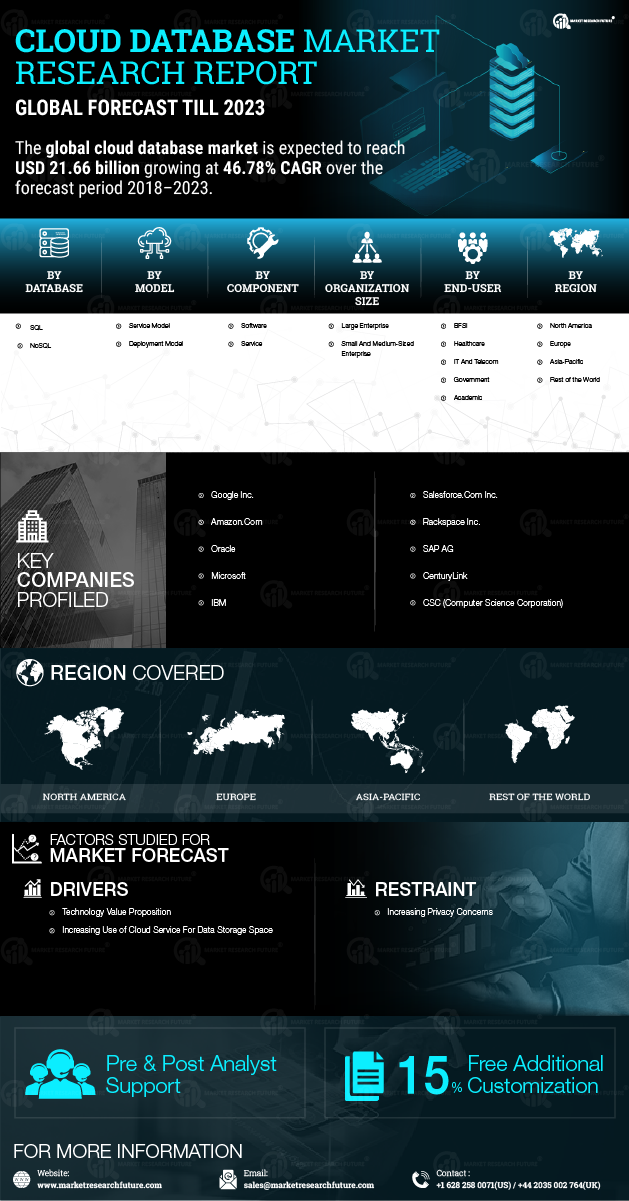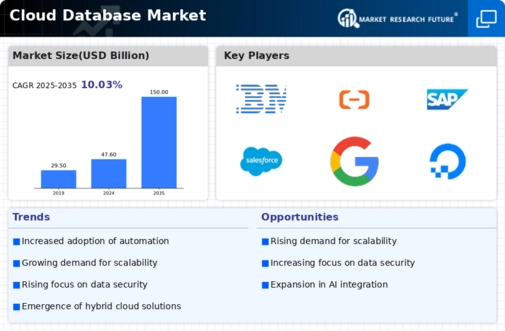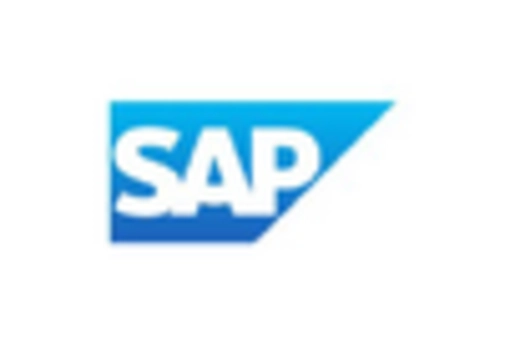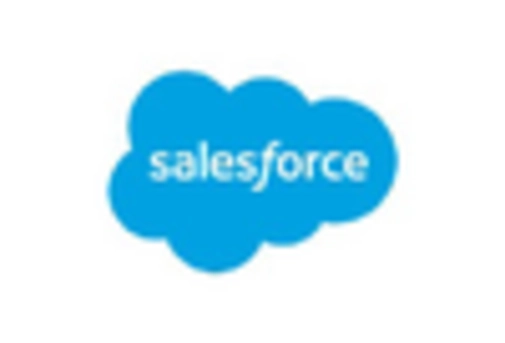Increased Focus on Data Analytics
In the Cloud Database Market, there is an increasing emphasis on data analytics capabilities. Organizations are recognizing the value of data-driven decision-making, prompting a shift towards databases that facilitate advanced analytics. The integration of analytics tools within cloud databases allows businesses to derive actionable insights from their data, enhancing operational efficiency and strategic planning. Market data suggests that the demand for analytics-driven cloud databases is expected to rise significantly, with a projected increase in adoption rates among enterprises. This trend underscores the importance of robust data analytics features in cloud databases, as organizations strive to leverage their data assets for competitive advantage. Consequently, the Cloud Database Market is likely to witness a proliferation of solutions that prioritize analytics capabilities.
Emergence of Hybrid Cloud Solutions
The Cloud Database Market is increasingly characterized by the emergence of hybrid cloud solutions. Organizations are recognizing the benefits of combining on-premises infrastructure with cloud capabilities, allowing for greater flexibility and control over data management. Hybrid cloud databases enable businesses to optimize their workloads by distributing them across different environments based on specific requirements. Market Research Future suggest that the adoption of hybrid cloud strategies is on the rise, as enterprises seek to balance the advantages of both public and private clouds. This trend is indicative of a broader shift towards more versatile and adaptable IT infrastructures. As a result, the Cloud Database Market is likely to expand with a diverse range of hybrid solutions that cater to varying organizational needs.
Growing Importance of Data Security
Data security has emerged as a pivotal concern within the Cloud Database Market. As organizations migrate sensitive information to cloud environments, the need for robust security measures becomes paramount. This trend is reflected in the increasing investment in security technologies and compliance frameworks. Organizations are seeking cloud databases that offer advanced security features, such as encryption, access controls, and regular audits. Market analysis indicates that the demand for secure cloud database solutions is on the rise, with a significant portion of enterprises prioritizing security in their cloud strategies. This heightened focus on data security not only protects sensitive information but also fosters trust among customers and stakeholders. As a result, the Cloud Database Market is likely to evolve with an emphasis on security-centric solutions.
Adoption of Serverless Architectures
The Cloud Database Market is witnessing a growing trend towards serverless architectures. This approach allows organizations to deploy databases without the need for managing underlying infrastructure, thereby reducing operational complexities. Serverless databases offer automatic scaling, high availability, and cost efficiency, making them an attractive option for businesses looking to optimize their cloud expenditures. Market data indicates that the adoption of serverless database solutions is expected to increase, as organizations seek to streamline their operations and focus on core business activities. This trend aligns with the broader movement towards serverless computing, where the emphasis is on agility and efficiency. Consequently, the Cloud Database Market is likely to see a rise in offerings that cater to the serverless paradigm.
Rising Demand for Scalable Solutions
The Cloud Database Market is experiencing a notable surge in demand for scalable solutions. Organizations are increasingly seeking databases that can effortlessly scale to accommodate growing data volumes and user demands. This trend is driven by the need for flexibility in operations, allowing businesses to adjust resources based on fluctuating workloads. According to recent data, the cloud database market is projected to grow at a compound annual growth rate of approximately 25% over the next five years. This growth is indicative of a broader shift towards cloud-based infrastructures, where scalability is paramount. As enterprises continue to migrate to the cloud, the emphasis on scalable database solutions is likely to intensify, positioning the Cloud Database Market as a critical component of modern IT strategies.






















Leave a Comment